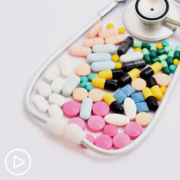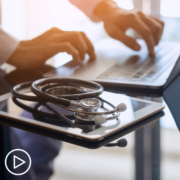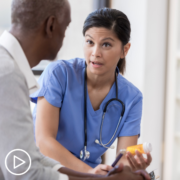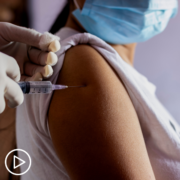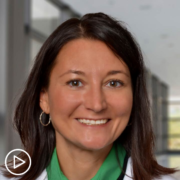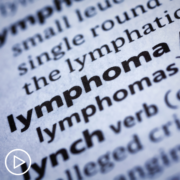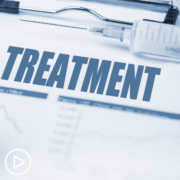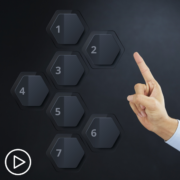My Waldenström Macroglobulinemia, Miracle Number Three
Dear Fellow Cancer Patient,
As I believe in universal love for ALL, I’m reaching out to you, whether we have met or not, to invite you to join me in embracing the concept of medical miracles no matter what kind of cancer you have.
I do so because in January 2023 I experienced my third medical miracle since being diagnosed with Waldenström macroglobulinemia (WM) in August 2012, an extremely rare and currently incurable lymphoma.
The mission of Patient Empowerment Network (PEN) to support and educate patients with all cancers has an exceptional impact. It is an honor to cooperate with PEN, and my dream is to bring you hope through my own medical successes through the past 10 years. (*Please see footnote for a brief history of my story.)
It is my tremendous good fortune to be in the constant care of my world-renowned WM specialists/hematologists at the Bing Center for Waldenström’s Macroglobulinemia, Dana-Farber Cancer Institute/Harvard Medical School in Boston, Mass. since March 2013. Also, my oncologist at Virginia Cancer Specialists who has extremely high credentials in hematological malignancies, diagnosed me in 2012, and treated me immediately with what was then the flagship chemotherapy for WM.
In September 2022, I experienced the most aggressive outbreak ever of my Waldenström. A lymph node was so enlarged, I discovered it myself. One week later, my feet were unbelievably swollen, which I discovered when I couldn’t put my shoes on. I immediately reached out to the Bing Center’s Director, Dr. Steven Treon. Within the same hour, he called my Virginia oncologist and recommended a PET scan and biopsy for me. The next morning at 10 am, less than 24 hours later, I was examined in Virginia by my oncologist, and he ordered both tests on the spot.
The results were extremely concerning and put fear in my heart again as is the case with any cancer diagnosis. Enlarged lymph nodes were very widespread throughout my body, and there was increased activity in my entire bone marrow throughout my skeleton from head to toe.
My two Bing Center for WM doctors’ recommendation of Benda-R [bendamustine (Treanda) and rituximab (Rituxan)], for chemotherapy was agreed to by all upon consultation with my Virginia oncologist.
For three months, I couldn’t walk outside of my house and only went to medical appointments with my oncologist every week and chemotherapy treatments for two days each month. Tony, my husband, had to drive me there and take me by wheelchair down the hall to his office. I was also very frail due to losing 15 pounds, making my weight 90 pounds.
During this very challenging time, my brother Mike, a two-time survivor of non-Hodgkin lymphoma (NHL), supported me constantly and even called me from Egypt and Panama on his cruises there, as he understands too well how trying it is to be back in treatment for cancer. My dear friends also offered wonderful daily encouragement with special contact to lift my spirits.
After three months of chemotherapy, my follow-up PET scan in January 2023, showed “complete interval resolution of the abnormal marrow and nodal activity evident on the previous study.” Although I’m not an expert, the comparison of the images of my body between September and January was remarkable. In the Bing Center for Waldenström’s clinical review of its patients led by my doctors and joined by their colleagues from three Harvard hospitals in Boston, my PET scan results were examined, and one more round of chemotherapy was unanimously recommended to complete my treatment.
My third medical miracle has arrived! According to Dr. Steven Treon, Director of the Bing Center for Waldenström’s Macroglobulinemia in Boston, “From all evidence so far, it appears you may be in complete remission!” My deepest gratitude to him, Dr. Jorge Castillo, Clinical Director of the Bing Center, and my Virginia oncologist for their cooperative spirit with each other on my behalf and extraordinary attention in providing life-saving treatment to me is beyond words. In July 2023, a bone marrow biopsy and CT scans at the Bing Center for WM in Boston are planned to confirm my response.
Yet, again, I am celebrating the gift of life with Tony who has been a saint to me through countless years of ups and downs with experiences as a WM patient. He has been by my side and done absolutely everything possible to love and support me endlessly. For care partners, be sure to get the support you deserve for yourself, as cancer in your world is very challenging for you too.
Amazingly, although I couldn’t swim for seven months, I exceeded my own goal and swam for 40 minutes during my first time back at a pool in my fight to regain strength and normalcy. And I can now walk for 15 minutes outside every day, too, as my swollen feet have resolved. Tony even took me to a favorite place for my March 2023 birthday, the first time we’ve gone to a restaurant since August 2022.
As I mentioned earlier, in sharing my medical miracles with you, my dream is to give you hope for your own cancer treatments – and success. I encourage you to stay in contact with family and friends, be a proactive advocate for yourself, read PEN’s news and that of other relevant cancer support organizations, follow your own status, and reach out to your oncologist immediately with concerns or new symptoms, see a specialist for your specific cancer if possible or have your oncologist consult with one. Stay hopeful and realize that profoundly sophisticated advancements in medical research and science are progressing at a phenomenal pace for all cancers and continue forward with unwavering commitment by medical experts across the globe. I have benefited from this greatly in my own experiences in the past 10 years and may this be truly inspiring for you too!
Wishing you all the best in every way!
Sincerely, Lu Kleppinger
Footnote:
* Brief history…In August of 2012, being highly symptomatic, I was diagnosed with Waldenström macroglobulinemia (WM), One week later, I started chemotherapy provided by my Virginia oncologist. In March 2013, I became a patient of Dr. Steven Treon, Director of the Bing Center for WM/DFCI/Harvard Medical School in Boston and he extended my chemotherapy for an extra year. After 18 months and 50 infusions, it was an extraordinary success and gave me five years of being under control without treatment. In 2014, my hematologist, Dr. Jorge Castillo, Clinical Director at the Bing Center, said “You are doing really, really, great! Go live and have fun!” I did just that.
In 2019, my WM flared up a second time, and Dr. Castillo placed me on ibrutinib (Imbruvica), a daily pill for life. The results were incredible within a month, and my WM was under control yet again. I lived a normal life for three years, feeling cancer-free.
Original Stories of Hope from the first two episodes can be found at Lymphoma.org and IWMF.com.



